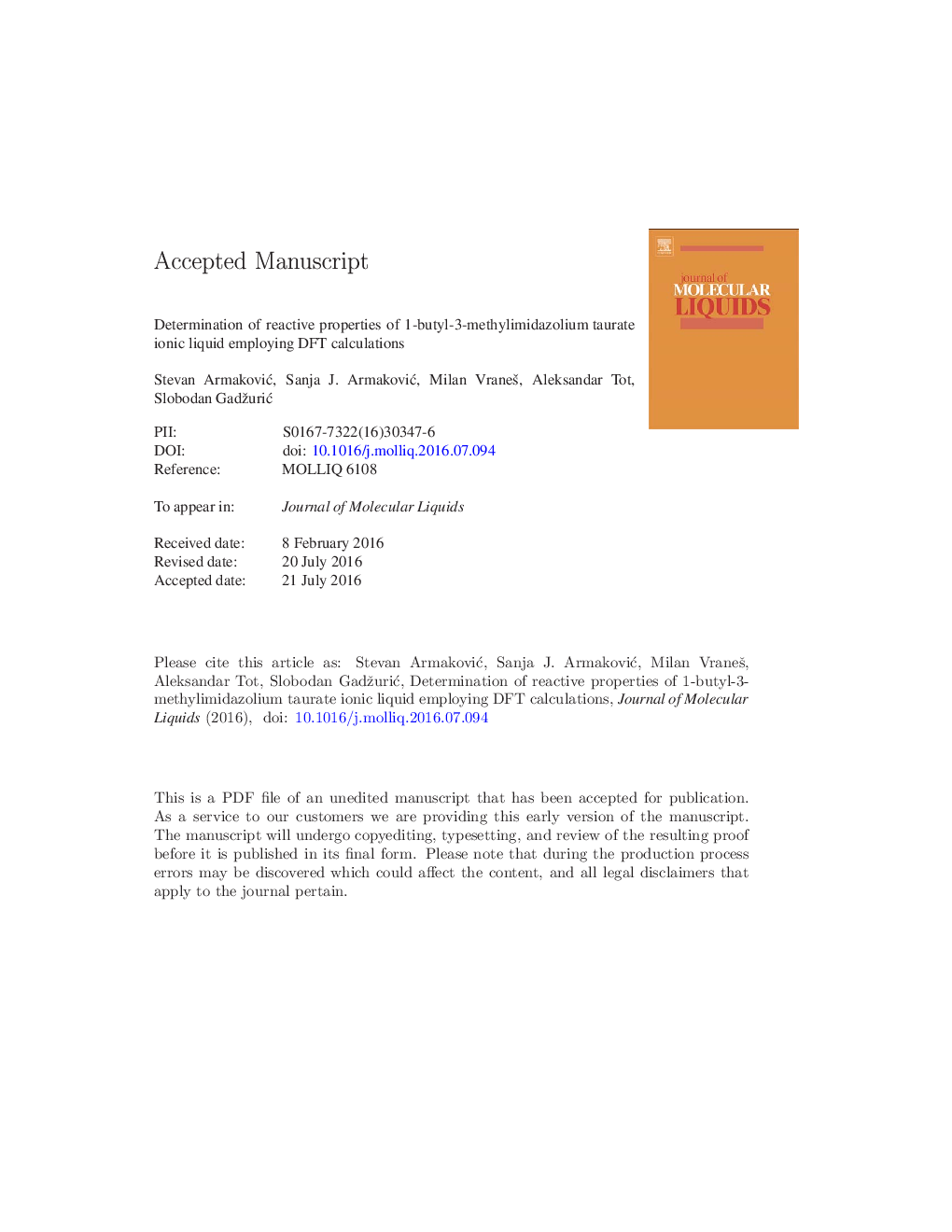| Article ID | Journal | Published Year | Pages | File Type |
|---|---|---|---|---|
| 5409950 | Journal of Molecular Liquids | 2016 | 29 Pages |
Abstract
Reactive properties of a newly synthesized third generation ionic liquid, namely the 1-butyl-3-methylimidazolium taurate ([BMIM][Tau]), has been investigated employing density functional theory (DFT) calculations. M06-2X exchange-correlation functional with 6-31GÂ +(d,p) basis set was chosen for the geometrical optimizations and calculation of various properties. Global reactive properties have been investigated using molecular orbital theory and quantum molecular descriptors. Dipole moment indicates weaker interactions with water than in the case of our previously investigated [BMIM][Sal] ionic liquid (IL). Further, molecular electrostatic potential (MEP) and averaged local ionization energy (ALIE) surfaces recognized nitrogen atom of [Tau]â and carbon atoms of imidazolium ring to be prone to electrophilic attacks. Fukui functions provided further insight into the local reactivity properties of this IL, indicating that C(9) position of imidazolium ring (in some literature as C2) could be prone to the nucleophilic attacks, while other carbon atoms of imidazolium ring could be prone to electrophilic attacks. Bond dissociation energies (BDEs) have been calculated as well, indicating that SO bond of [Tau]â could be vulnerable to chemical species, however, our previous molecular dynamics results indicate that this part of the molecule has pronounced interaction with water, so the hydrolysis mechanism is more probable. Finally, using all calculated data we summarized reactive properties.
Keywords
Related Topics
Physical Sciences and Engineering
Chemistry
Physical and Theoretical Chemistry
Authors
Stevan ArmakoviÄ, Sanja J. ArmakoviÄ, Milan VraneÅ¡, Aleksandar Tot, Slobodan GadžuriÄ,
